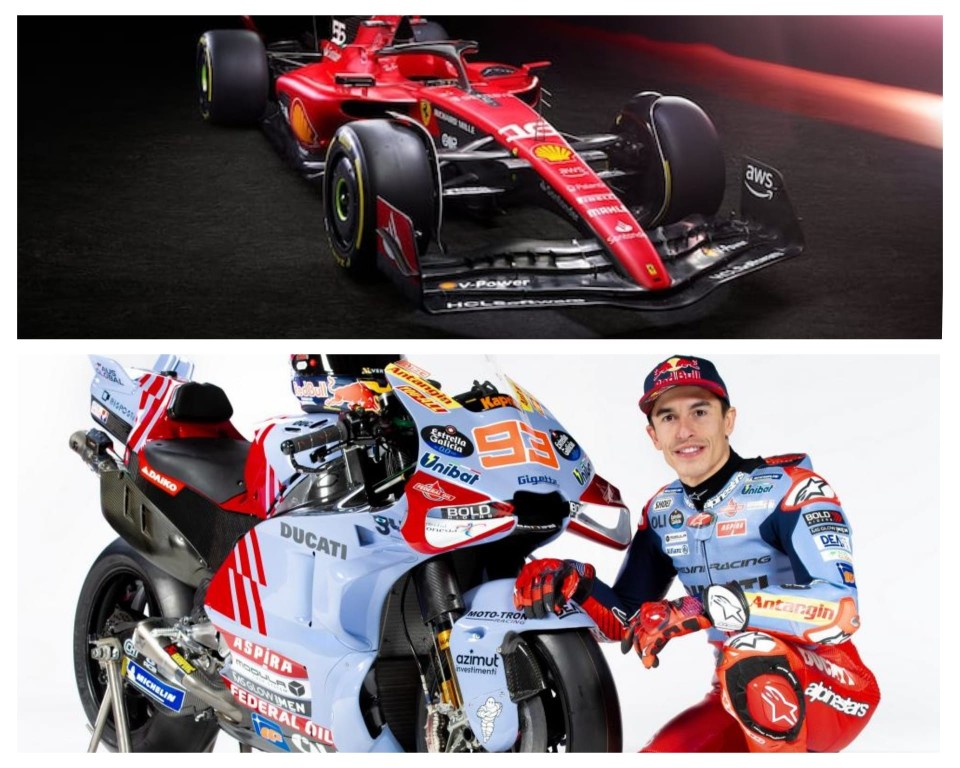In these first days of the Sepang shakedown we have mainly shown you new aerodynamic features, but only because they are the easiest (relatively) to spot.
In fact, no one can say whether the profile of a camshaft has been changed, whether a crankshaft has been lightened or made heavier and so on. Yet these are precisely the kind of innovations that generate torque and power in a motorcycle. The engine, today, is well hidden inside the fairing which thus gets all the photographs and attention.
This is a situation which could change dramatically starting from 2027, when the new MotoGP rules, which so far have been mainly talked about to reveal the new displacement - 850 and no longer 1000 cc - and the fact that the various shapeshifters, or lowering devices, if you prefer, will be abolished, come into force.
Carmelo Ezpeleta, who with his 'golden vote' can do anything he wants, and also Pit Beirer, have been speaking about it.
“I believe that very intelligent decisions have been made for the 2027 regulations - said the KTM Motorsport director, who added - Perhaps we should discuss whether it was not appropriate to make the changes even earlier. But in general we should eliminate that extreme technology that is influencing riding style, to give the rider back the decision of when to brake, when to pass, how to manage the race, how to manage the front tyre."
A correct observation, because some, if not all of the problems of the current MotoGP are generated by the massive use of aerodynamics which generates downforce, in terms of load on the tyres, which not only causes them to overheat, but influences the braking points and acceleration.
After all, competition, on two or four wheels, is based entirely on the possibility of braking later and always accelerating earlier.
The fact is that current MotoGP technology, based on the assumptions of a decrease in the cost of racing competition - hence the freezing of engines, single tyres etc. - has evolved towards a different use of money, the budget, which each manufacturer decides to allocate for its racing programme. Because the rule for Grands Prix is that those who invests the most usually win. Then there are periods in which a champion is able to make a difference, and it is better to pay him as much as he wants, and periods in which, instead, the vehicle counts more. In our opinion we are in this second phase. And this is why the manufacturers, Ducati and KTM above all, are investing in young riders, promises for the future at low cost: the money saved is invested in development.
However, some considerations need to be cleared from the table. Like: 'these MotoGP bikes are ugly’, or, 'aerodynamics has never been part of motorcycling'.
This is nonsense: at the end of the 1950s the 'bell-shaped' fairings of the Moto Guzzi (cover photo), which had its own wind tunnel, were banned. There was criticism from the manufacturers on the fact that in this way the bikes did not resemble production bikes (which were never faired). But also on the difficulty of steering those torpedoes, with a very low cx on the straight, but unstable at the considerable maximum speeds of the times due to the lift caused by that type of fairing. The solution was the adoption of 'dolphin-shaped' fairings, in vogue until a few years ago, when it seemed that the intent was solely to reduce air resistance.
The abolition of full fairings was not the only intervention made in those heroic times. In fact, works of mechanical art were prohibited, such as the Moto Guzzi 8-cylinder 90° transversal V, with two overhead camshafts per bank and two valves per cylinder, with a unit displacement of 62.3 cc for a total of 498 .5 cc (bore 44 mm, stroke 41 mm), powered by 8 20mm carburettors, which later became 21, water cooled and dry sump lubrication.
In 1974, with the victory of Giacomo Agostini with the Yamaha 500 2-stroke, it was the end of the four-stroke, which then reappeared in 2002 with the innovation of the five-cylinder Honda RC211-V. Finally a news worthy of note in a panorama of motorcycles that are all the same and now out of touch with reality, as far as series production is concerned.
What is certain is that history repeats itself: with enormous limitations in the field of engines, with an imposed bore of 81 mm, now only Yamaha resists with its in-line four. But this too will have to change, because if with the decrease in displacement the bore rule will remain, we will reach crazy rotation speeds.
In short, it is time for changes and these should be thought of and made with the biggest difference that exists between motorcycle racing and car racing in mind. In the second you drive mainly by technique, in the first the motorcycle rider is an integral part of the machine-motorcycle, because his position and mobility influences its behaviour.
We should think more about the subject of the rider as integral part of the motorcycle. What Ezpeleta said about the need for manufacturers to equip themselves with more riders - reserves, like a football team - for the increasingly frequent crashes, is nonsense. And some like Beirer already understood this when he declared that "MotoGP must be very careful not to exceed the 22 events scheduled for the 2024 season in the calendar".
Currently, after Argentina's exit from the scene we are at 21, but the reality is made up of 42 races, including the Sprints. And twice as many starts inevitably equates to twice as many accidents. There is little that can be done, it's the statistics.
Don't tell me, at this point, that doubling the races hasn't led to an increase in costs: it’s simply not true. Nor that Grand Prix races with 22 riders within half a second are fantastic. Unless we agree with the thought of the FIM President, Jorge Viegas, who declared that two starts are more spectacular. Aside from the sheer obviousness of the observation, it is true that this doubles the risk because it is precisely in the wild bunch of the first corner that most of the most dangerous accidents occur.
Then there is the issue of the inevitable increase in the number of riders per team, in the form of 'reserves' or test riders. It's a cost increase.
The reality, however, is that diversity not only in terms of aerodynamics would be appreciated by the riders themselves who could thus showcase their talent. Instead of being limited by a technology - aerodynamics and electronics - that today locks their talent in a cage.
“It's no mystery that the more aerodynamics there is on motorbikes, the more difficult overtaking becomes. The public isn't interested in three or four tenths less per lap, but the action - said Marc Marquez as soon as he arrived in Sepang and after following the evolution of MotoGP on the internet - rather it would be better to evolve chassis and engines".
Increase the displacement fractioning? Shift technical attention to other factors, such as the gearbox, still limited to six speeds despite the introduction of seamless? These are just some of the ideas. Ultimately it would mean being able to pour innovations into production.
Personally, I like the current MotoGP bikes, but they are all starting to look the same, as always happens when a regulation remains stable for too long. It's time for change, but 2027 seems too long to wait.











